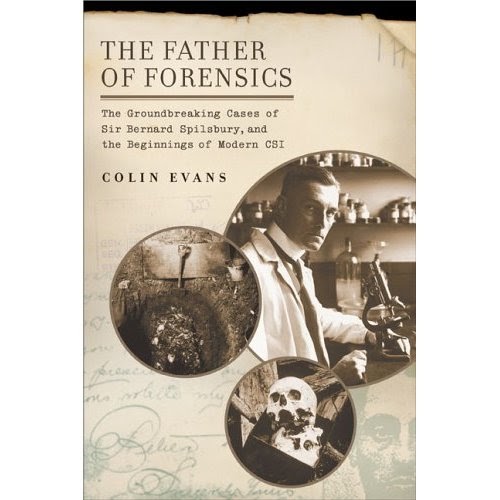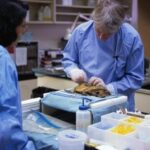The realm of forensic pathology is a shadowy yet crucial domain where medical expertise intersects with the pursuit of justice. These are the individuals who, with scalpel and microscope, speak for the silent victims. Delving into the intricacies of death, they uncover narratives often obscured by circumstance or malevolence. But who are the luminaries in this morbidly fascinating field? Let’s examine some of the key figures, past and present, who have shaped our understanding of death investigation.
A Pioneer in Poisons: Mathieu Orfila (1787-1853)
Often hailed as the father of toxicology, Mathieu Orfila’s work revolutionized the field of forensic science. His meticulous studies on the effects of various poisons laid the groundwork for modern toxicological analysis. Orfila’s meticulous experimental approach challenged the subjective and often speculative methods prevalent in his time. He was instrumental in establishing toxicology as a distinct and scientifically rigorous discipline, providing courts with concrete evidence in poisoning cases, a paradigm shift from relying on anecdotal accounts. Imagine a world where the subtle signs of arsenic poisoning remained a mystery, and you begin to appreciate Orfila’s monumental contribution.
The Sherlock Holmes of Pathology: Sir Bernard Spilsbury (1877-1947)
Sir Bernard Spilsbury, a flamboyant and often controversial figure, dominated British forensic pathology in the first half of the 20th century. His courtroom demeanor and seemingly infallible pronouncements captivated the public and influenced countless juries. He had an uncanny ability to reconstruct crime scenes from minimal evidence. Spilsbury’s involvement in high-profile cases such as the Crippen murder trial cemented his reputation as a preeminent expert witness. Yet, his legacy is not without its detractors. Critics argue that his theatrical presentation sometimes overshadowed the scientific rigor demanded by his profession. Nonetheless, Spilsbury undoubtedly popularized forensic pathology, bringing it into the public consciousness and shaping its development in the United Kingdom. He certainly embodied the role of a medical detective.
Champion of the Underserved: Dr. Milton Helpern (1902-1977)
Dr. Milton Helpern, a titan of American forensic pathology, served as the Chief Medical Examiner of New York City for several decades. His dedication to thorough investigation and his unwavering commitment to uncovering the truth earned him widespread respect. Helpern championed the cause of the underserved and marginalized, meticulously documenting cases of neglect, abuse, and systemic injustice. His groundbreaking work in establishing a robust medical examiner system in New York City served as a model for other municipalities. Helpern’s legacy extends beyond his technical expertise; he was a staunch advocate for the proper administration of justice, ensuring that every life, regardless of its circumstances, received a thorough and impartial examination.
The Modern Microscopist: Dr. Michael Baden (Born 1934)
Dr. Michael Baden is a contemporary figure whose name is synonymous with high-profile investigations. His career has spanned decades and has encompassed a wide array of complex and controversial cases. He is known for his insightful analysis of injuries and his ability to present complex medical findings in a clear and understandable manner. Baden’s involvement in cases such as the reinvestigation of the John F. Kennedy assassination and the death of actor John Belushi has brought forensic pathology into the forefront of public attention. His television appearances and published works have further demystified the field, making it accessible to a wider audience. Dr. Baden embodies the modern forensic pathologist, blending scientific expertise with effective communication skills.
Unraveling the Deadliest Pathogens: Dr. James Young Cash (1908-1983)
Dr. James Young Cash, though perhaps less publicly renowned than some of his contemporaries, made significant contributions to understanding the pathology of infectious diseases. His meticulous work in characterizing the morphological changes associated with viral and bacterial infections was crucial in developing diagnostic tools and treatment strategies. In an era before advanced molecular techniques, Cash’s ability to discern subtle differences in tissue samples through microscopic examination was invaluable. His contributions to the Armed Forces Institute of Pathology (AFIP) helped establish the institute as a leading center for the study of infectious diseases.
The DNA Trailblazer: Dr. Alec Jeffreys (Born 1950)
While not a forensic pathologist per se, Sir Alec Jeffreys’ discovery of DNA fingerprinting revolutionized forensic science. His groundbreaking work provided a powerful new tool for identifying individuals and linking them to crime scenes. DNA analysis has transformed death investigation, allowing pathologists to identify victims, establish familial relationships, and uncover previously hidden connections. Jeffreys’ discovery has not only aided in solving criminal cases but has also exonerated wrongly convicted individuals, underscoring the transformative power of scientific innovation in the pursuit of justice. His work opened a whole new frontier in forensic capability.
Looking to the Future
The field of forensic pathology continues to evolve, driven by advances in technology and a growing understanding of human biology. Future generations of forensic pathologists will be equipped with even more sophisticated tools, enabling them to unravel the mysteries of death with unprecedented precision. From the intricacies of the microbiome to the nuances of epigenetic modifications, the future holds immense promise for unlocking new insights into the causes and circumstances of death. The individuals listed above represent but a fraction of the many dedicated professionals who have contributed to this vital field. Their work serves as a testament to the power of science to illuminate the darkest corners of human experience and to bring closure to those who seek justice.










Leave a Comment